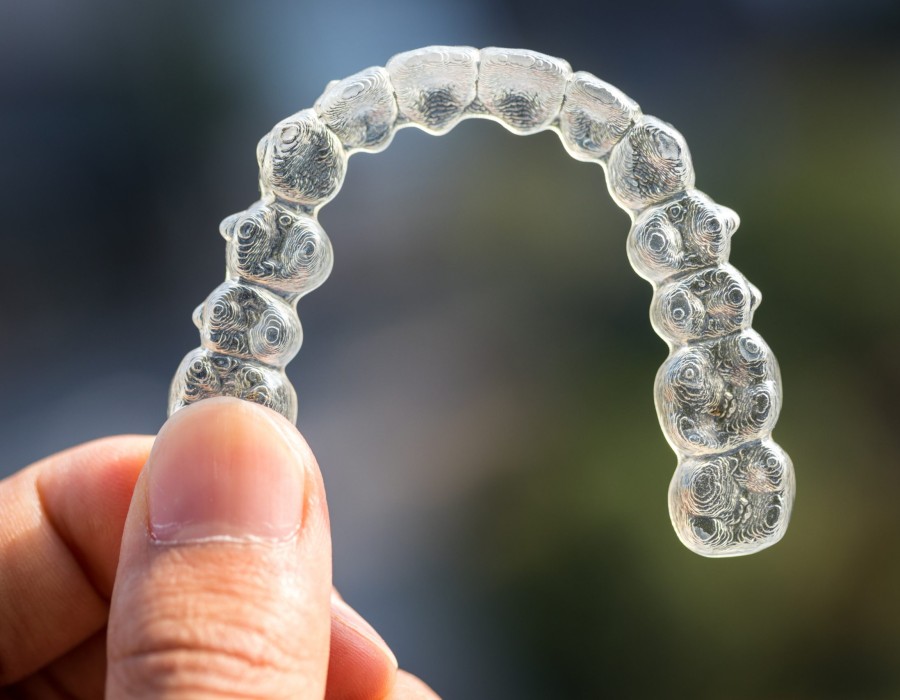If you're exploring orthodontic treatments to correct your bite but want to avoid traditional metal braces, Invisalign might be on your radar. Known for being clear, removable, and discreet, Invisalign is a popular option for teens and adults looking to improve their smile without the noticeable brackets and wires. But beyond straightening teeth, can Invisalign fix bite issues?
Let’s take a closer look at how this treatment works, the types of bite problems it can address, and whether it might be the right choice for your smile.
Understanding Bite Problems: Why They Matter
A proper bite means your upper and lower teeth align correctly when your mouth is closed. When they don't, it’s called a malocclusion, or bite problem. Some common bite issues include:
- Overbite: Upper front teeth overlap the lower front teeth too much.
- Underbite: Lower front teeth extend beyond the upper front teeth.
- Crossbite: Some upper teeth sit inside the lower teeth when biting down.
- Open bite: There's a gap between the upper and lower front teeth when the back teeth are closed.
These issues aren't just cosmetic. Bite problems can cause difficulty chewing, jaw pain, headaches, uneven tooth wear, and even speech difficulties over time.
Can Invisalign Fix Bite Issues?
The answer is yes — but with some limitations depending on the severity and type of bite issue.
1. Overbite
Invisalign is effective at treating mild to moderate overbites. By applying gentle, consistent pressure through custom-made aligners, Invisalign can shift the teeth and sometimes the jaw to achieve a healthier bite.
2. Underbite
Mild underbites caused by tooth positioning can be improved with Invisalign. However, if the underbite is due to jaw alignment issues, more advanced orthodontic treatment or surgery might be required.
3. Crossbite
Crossbites are usually treatable with Invisalign. The aligners can move the upper and lower teeth into a more ideal position to prevent uneven tooth wear and jaw discomfort.
4. Open Bite
Invisalign can help close open bites by moving the teeth into proper vertical alignment. It's especially effective when the open bite is caused by habits like thumb sucking or tongue thrusting.
How Does Invisalign Work?
Invisalign uses a series of clear aligners custom-designed for your mouth. Each aligner makes small adjustments to the position of your teeth. Over time, these movements help to align your teeth and correct bite issues. You’ll typically switch to a new set of aligners every 1–2 weeks and need to wear them for 20–22 hours per day for optimal results.
Depending on your specific case, treatment can take anywhere from 6 months to 2 years.
When Invisalign Might Not Be Enough
While Invisalign has advanced significantly over the years, it may not be the best solution for severe bite issues or jaw misalignments. In these cases, traditional braces, orthopedic appliances, or even surgical intervention may be needed.
A dentist in Markham who is trained in Invisalign treatment will evaluate your bite with X-rays, digital scans, and photographs to determine the best treatment plan.
The Cosmetic and Functional Benefits
Choosing Invisalign not only helps correct bite issues but also delivers aesthetic advantages. Straighter teeth enhance your smile and improve your overall confidence. And since the aligners are nearly invisible, most people won’t even know you’re wearing them.
Beyond looks, fixing your bite can lead to:
- Better chewing function
- Reduced risk of tooth damage and wear
- Improved jaw comfort and reduced TMJ symptoms
- Easier cleaning, reducing the risk of cavities and gum disease
These benefits make Invisalign a great option for those considering cosmetic dentistry near you.
What to Expect During Invisalign Treatment
Here’s a quick rundown of what your Invisalign journey might look like:
- Initial Consultation – Your dentist evaluates your bite and determines if Invisalign is suitable.
- Digital Impressions and Planning – 3D imaging is used to create a treatment plan.
- Receiving Your Aligners – You'll receive several sets of aligners with instructions on when to switch them.
- Checkups – Expect visits every 6–8 weeks to monitor progress.
- Retention Phase – After treatment, retainers are used to maintain your new smile.
Final Thoughts: Is Invisalign Right for You?
Invisalign can be a game-changer for people looking to correct bite issues discreetly. If your bite concerns are mild to moderate, and you’re committed to wearing aligners consistently, this treatment could be a great fit.
However, it’s essential to consult with an experienced dental provider to know for sure. Every smile is unique, and only a professional can recommend the most effective treatment plan tailored to your needs.
Ready to Transform Your Smile?
If you're wondering whether Invisalign in Markham is the right step toward a healthier, more confident smile, our team at Markville Dental is here to help. We combine advanced orthodontic technology with personalized care to make your Invisalign journey smooth and successful.
Schedule your consultation today and let us help you achieve the smile you’ve always wanted — both in form and function.





Comments